Blog
Tiger Woods Breaks Down His Iron Game – Use These Tips
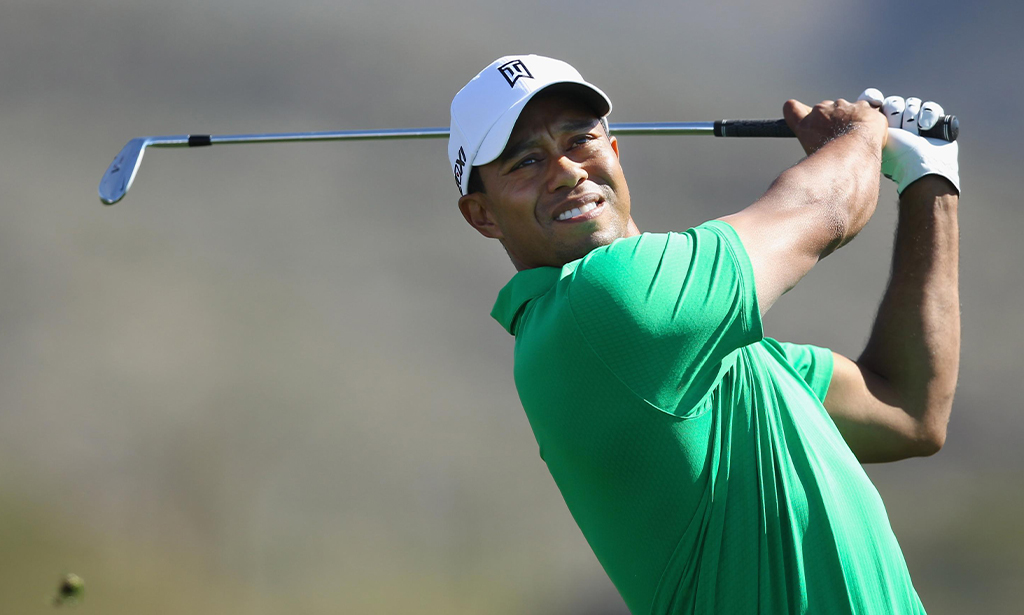
My swing and my game have evolved over the years, but one thing has remained consistent: I’m always confident with an iron in my hand.
I’m not one of the longest hitters on tour anymore—I can’t hit a wedge 150-plus yards like some guys do—so my iron game is absolutely critical to my success at this stage. It sounds simple, but the best way to make birdies is to hit your approaches close. To do that, you need to have distance control, which is possible only with consistent contact. For example, I hit my irons so pure last year at Augusta, and because of that, I had a ton of good looks at birdie. Two specific shots from Sunday’s final round come to mind: On 7, when I needed a birdie to jump-start the round, I hit my trusted low, trapping fade to tap-in range. Then on 16, I hit a high-draw 8-iron that plopped down in the perfect spot, took the slope and finished about three feet from the cup. That birdie gave me a two-shot lead and firm control of the tournament.
Note that one of those shots was a low fade and the other a high draw. I’ve always taken pride in my ability to vary trajectory and shape the ball both ways. Very few of my iron shots look exactly the same. Still, there are a few basics I try to apply to every iron shot, and they’re principles you can use for your game.
The first thing I do is take a good look at the lie. Is it anything out of the ordinary? Is it above or below my feet?
Is it in a divot? If it’s in the rough, is it a flyer?
Once I assess the lie, I shift my focus to the green complex. I like to let the course dictate what type of shot I’m trying to hit. Where is the exact spot I want the ball to land? Generally, I tend to hit more draws to left pins and fades to right pins, but there are exceptions. For example, sometimes it’s more important to have the ball working away from a hazard than toward the flag. Amateurs don’t think enough about things like that before they start their pre-shot routine.
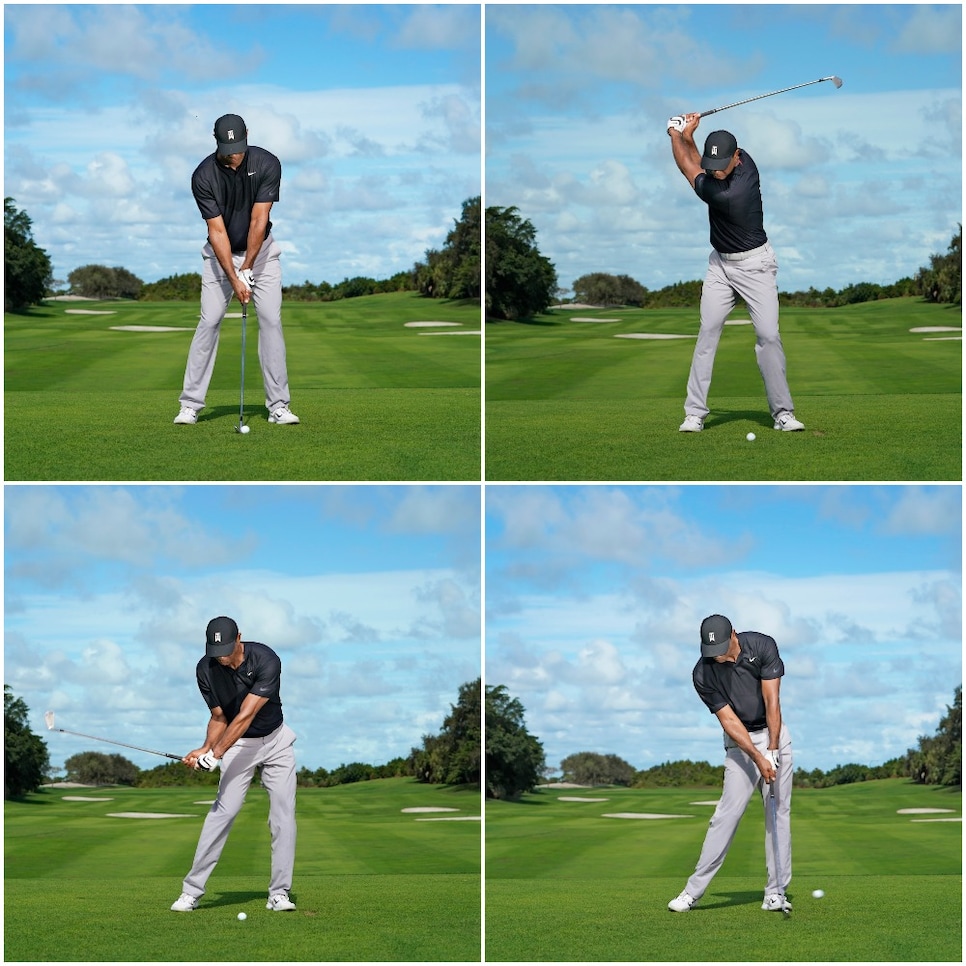
As far as my setup, because of all my back issues, I’ve tried to avoid side bend in my swing, and that all starts with how I stand to the ball. I like to find a balanced and athletic posture that’s free of any tension in my arms or shoulders.
A good thought for me, and one that should help you make solid contact, is to keep your shoulders, hips and knees stacked on the same vertical plane throughout the motion. My baseline is to be as neutral as possible at address, with everything square to the target—then I’ll make adjustments to my stance and clubface for a draw or a fade, or for a low shot or a high shot.
I play the ball a bit farther forward in my stance than the average tour pro—it’s just my preference—and as a result I tend to sweep my irons more than dig. I’ll move the ball one ball forward in my stance if I’m trying to hoist one up, and I’ll play one ball back of normal if I’m trying to flight it down.
J.D. Cuban
When I swing, my thoughts are pretty simple and more feel-oriented than technical. I don’t watch my swing on video too often. I prefer to feel things with my hands, then confirm with my buddy Rob McNamara that he sees what I’m feeling.
My backswing has changed quite a bit throughout the years. I used to load up much more on my right side and try to create as much width as possible. As a result, my weight would move to my right leg, and my head would slide laterally away from the target. That’s how a young man swings the club. Now, to put less strain on my body, I try to keep my head and chest more stable and turn more around my right side.
To a large extent, my backswing is a function of my setup. At certain times in my career, I’ve had my hands lower or higher at address. For me, lower hands resulted in an earlier wrist set, and higher hands resulted in a later one. Now I feel like I’m quite neutral with my setup, which leads to a wrist set that happens around rib height.
Once I’ve completed my backswing—which almost always stops short of parallel because I’m concerned with hitting the ball the right distance, not the farthest distance—my main thought is to push down into the ground and clear my hips. That’s one reason my latest knee scope was so important. Toward the end of the summer, pain in my left knee prevented me from pushing hard. I was sliding a bit, which made it nearly impossible to get the hip rotation I needed to hit my cut. My other thought is to not let my hands get stuck behind me, which leads to having to save the swing and manipulate the face with my hands—that’s no good. The best way to avoid getting stuck is to not let the lower body out-race the hands on the downswing. My thought is to have everything synced when I reach impact.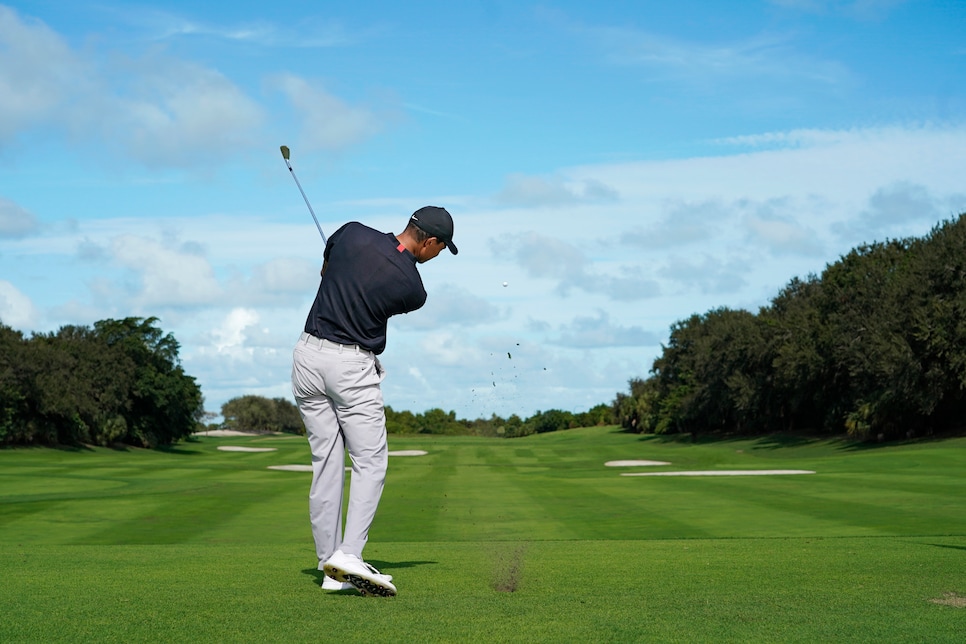
J.D. Cuban
I like to think that my follow-through determines how high the ball is going to launch. In reality, my follow-through is a result of my angle of attack. When I’m steeper and trying to flight it down, I feel like I cut off the swing shortly after impact. If I shallow it out to launch the ball really high, I throw my hands way up over my head and let them finish over my left shoulder.
Again, I’m a shotmaker at heart, and one of my favorite parts of playing golf is carving iron shots. I wouldn’t recommend amateurs try to work it as much as I do, but the basics I’ve laid out here will help you make better contact, which will allow you to hit the ball the right distance—and hopefully give yourself some tap-in birdies like I had at last year’s Masters. –with Daniel Rapaport
This article originally appeared on Golf Digest.
Blog
Why Proper Club Fitting Is the Real Game Changer
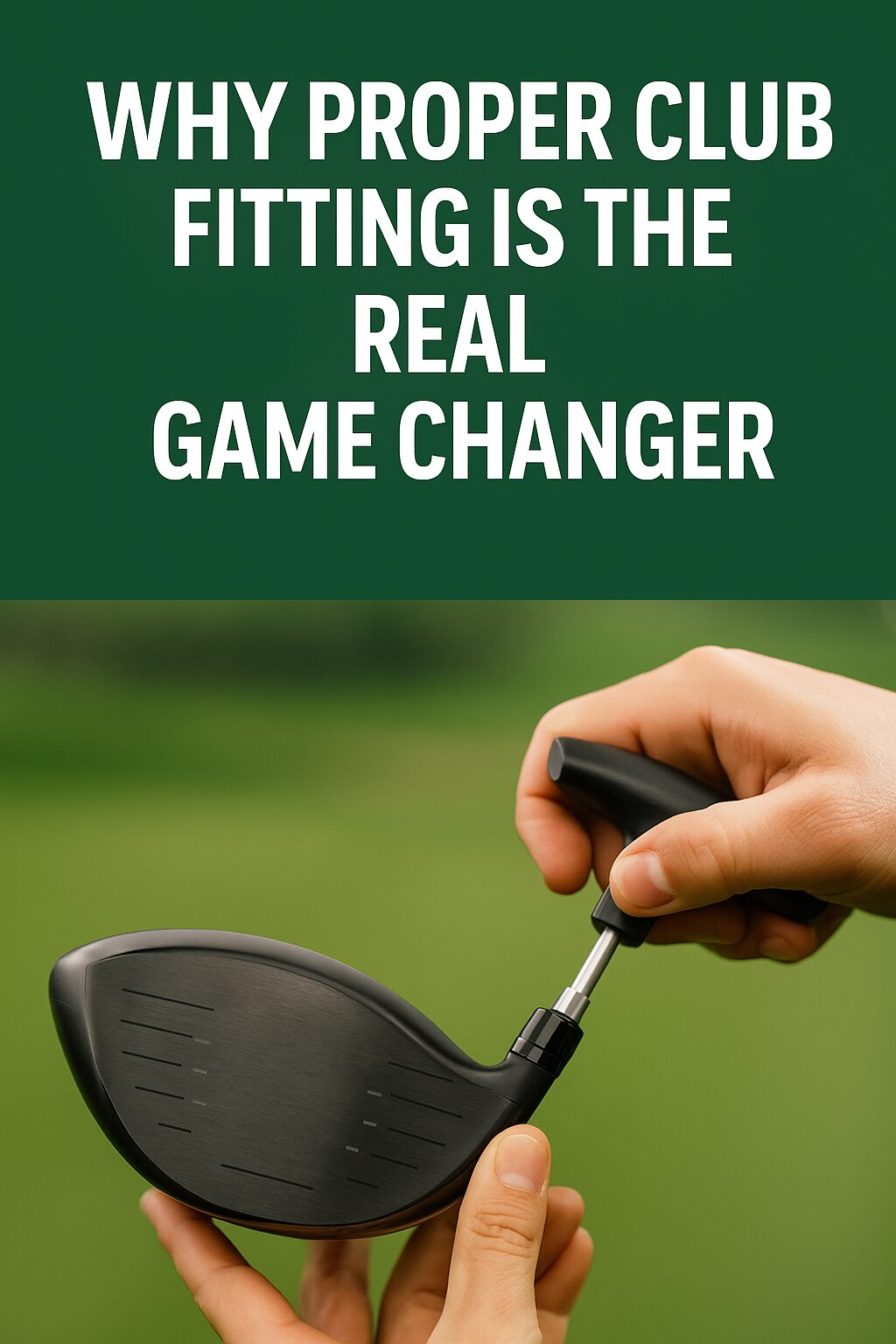
If you’ve ever walked off the 18th green thinking, “It’s not me, it’s the clubs,” well… you might be half right.
As a PGA Professional who’s watched thousands of swings—from scratch players to first-timers—I can tell you that one of the most overlooked keys to better golf is proper club fitting. Not just buying shiny new sticks off the rack, but taking the time to find clubs that are tailored to your swing.
You don’t need a Tour card to get Tour-level precision. Let’s talk about why club fitting matters, what it changes, and how it can truly transform your game from the tee box to the final putt.
The Myth of “Good Enough”
“I’m not good enough to be fit for clubs.”
That’s the most common thing I hear—and it’s completely backwards.
High-handicap golfers have even more to gain from club fitting than low-handicappers. Why? Because the equipment can help you fix ball flight, optimize distance, reduce mis-hits, and build confidence—all without having to reinvent your swing.
Off-the-rack clubs are designed to fit “average” specs. But no two golfers are the same. Length, lie angle, shaft flex, grip size—these all play a massive role in how the club interacts with your body and the ground.
What Happens in a Proper Club Fitting?
At its core, a fitting session is about matching the equipment to your natural swing—not forcing you to swing a certain way to fit the gear.
Here’s what a proper club fitting includes:
1. Interview & Swing Assessment
A certified fitter (or PGA pro like myself) will ask about your current set, ball flight tendencies, common misses, and goals. Then we’ll watch you hit some shots to get a baseline.
2. Launch Monitor Data
Using tools like TrackMan or Foresight, we’ll capture numbers like:
- Ball speed
- Launch angle
- Spin rate
- Club path and face angle
- Carry distance and dispersion
These numbers don’t lie—and they tell us what to tweak.
3. Testing Head & Shaft Combinations
You’ll hit several combinations of club heads and shafts to find what gives you the best performance. One degree of loft or a different shaft flex can make a huge difference.
4. Dialing In Lie Angle & Length
Lie angle affects directional control—too upright, and you might pull shots left; too flat, and you’ll miss right. Club length affects control, consistency, and strike location.
5. Grip Size & Feel
Don’t underestimate this. A grip that’s too thick or too thin can alter your grip pressure and release pattern.
Real Results—Backed by Data
One of my students recently went through a full iron fitting. He was using clubs he bought off the rack 10 years ago. His miss was a push-fade, and he struggled with distance control.
After 90 minutes, a combination of slightly shorter shafts, softer flex, and two degrees more upright lie changed everything. His dispersion tightened by 40%, and he gained an average of 12 yards per club. More importantly—his confidence skyrocketed.
And it wasn’t just him. Across the board, golfers who get fitted:
- Gain more consistent contact
- Reduce directional misses
- Improve distance gapping
- Hit more greens in regulation
- Score better, without changing their swing
The Mental Game Boost
Here’s a secret: it’s not just about numbers. Fitted clubs give you confidence. When you know the tool in your hand is built for you, you swing freer, commit more fully, and stop second-guessing every shot.
Confidence leads to better swings. Better swings lead to better results. It’s a cycle—and it starts with the right equipment.
What About Cost?
Yes, a proper fitting might cost $75–$150 depending on where you go. And yes, custom-fit clubs may be slightly more than what you’d pay at a big box store.
But if you’re already spending time and money on golf, wouldn’t you want to get the most out of it?
A one-time investment in fitting can save you years of frustration—and possibly hundreds spent chasing fixes that won’t work with ill-fitting clubs.
Look—I’ve given thousands of lessons in my career, and nothing changes a golfer’s outlook faster than finally swinging clubs that work with them, not against them.
Whether you’re a 5 handicap trying to fine-tune yardages or a 25 handicap tired of slicing your driver, a proper club fitting can absolutely be a game changer.
You don’t need a new swing—you just need the right tools.
So before you spend another dollar on swing gadgets or tip videos, find your local PGA professional or certified fitter and book a session. Your game (and your sanity) will thank you.
Want more ways to play better without starting over?
Visit ClickItGolf.com every week for practical golf improvement tips, equipment reviews, betting insights, and advice from golfers who live the game every day.
Blog
Zurich Classic 2025: Betting & Fantasy Insights from Kelly Hodgeson
Rory McIlroy returns to the Zurich Classic with Shane Lowry as favorites, but in this unique team event, betting and fantasy success comes down to smart picks and hidden value—here’s how to play it.
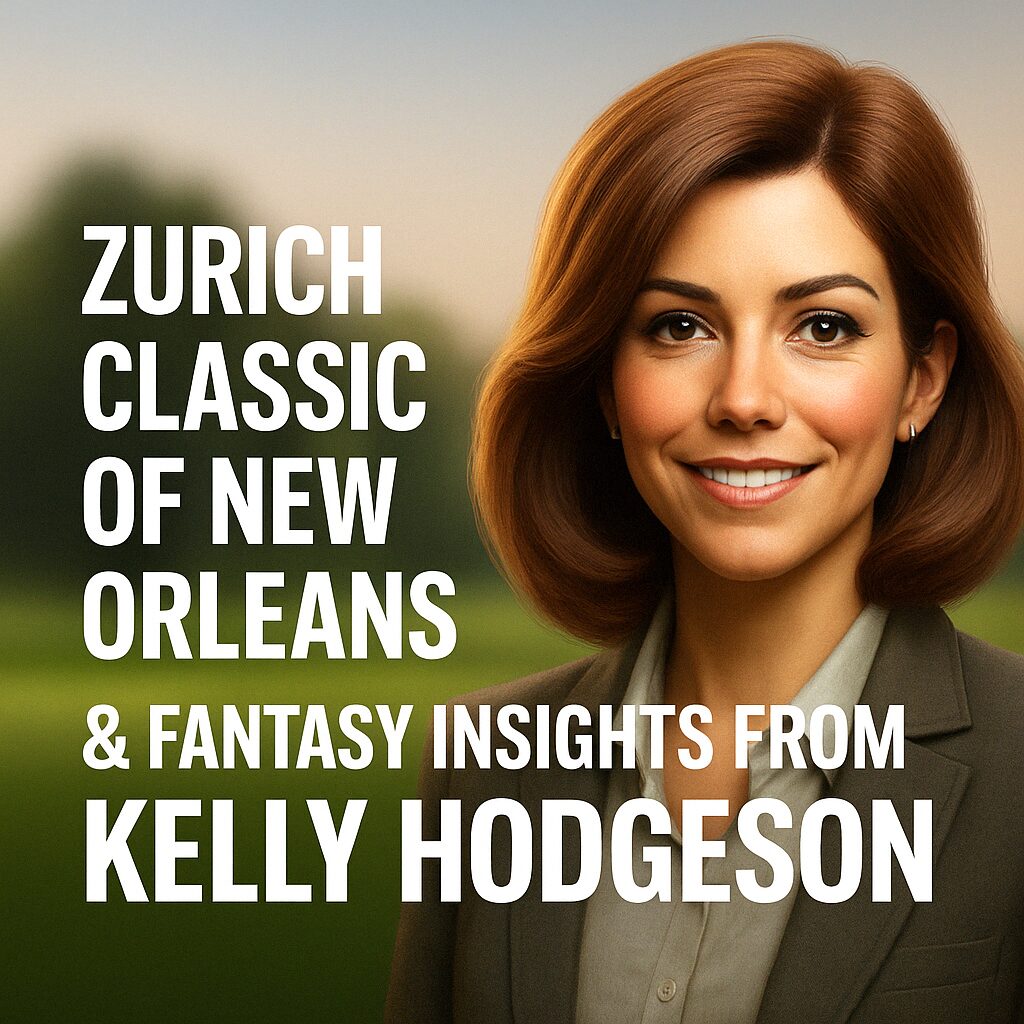
The Zurich Classic of New Orleans returns this week, offering a unique team format that challenges both bettors and fantasy players alike. As someone who enjoys the thrill of wagering and the strategy of fantasy golf, I’ve taken a close look at this year’s field to provide insights that could help you make informed decisions.
Understanding the Format
The Zurich Classic is the PGA Tour’s only team event, featuring 80 two-man teams competing over four rounds:
- Rounds 1 & 3: Best Ball (Four-Ball)
- Rounds 2 & 4: Alternate Shot (Foursomes)
This format emphasizes team chemistry and strategy, making it distinct from traditional stroke play events.
Defending champions Rory McIlroy and Shane Lowry enter the tournament as favorites, with odds around +350 to +360 across various sportsbooks. Their victory last year and McIlroy’s recent Masters win contribute to their favored status.
Betting Consideration: While their form is impressive, the low odds may not offer substantial value. In team events with unpredictable dynamics, it’s often prudent to seek teams with higher potential returns.
Teams to Watch
Several pairings present intriguing opportunities:
- Billy Horschel & Tom Hoge (+2200): Horschel’s history at TPC Louisiana, including a previous win, combined with Hoge’s recent top-20 finishes, make them a formidable duo.
- Thomas Detry & Robert MacIntyre (+1800): This European pair has shown consistency, with Detry’s earlier victory this season and MacIntyre’s solid performances leading up to the Masters.
- Patrick Fishburn & Zac Blair (+8000): As longshots, their fourth-place finish last year and recent form suggest they could surprise the field again.
Fantasy Golf Insights
For those setting fantasy lineups, consider the following:
- Nick Taylor & Adam Hadwin: Their past success at TPC Louisiana, including a second-place finish in 2023, indicates strong course compatibility.
- Davis Riley & Nick Hardy: Winners in 2023, their chemistry and experience in this format could translate into valuable fantasy points.
- Alex & Matt Fitzpatrick: The Fitzpatrick brothers have shown steady improvement, with a T11 finish last year, making them a reliable mid-tier option.
Strategic Betting Tips
- Value Over Favorites: In a format prone to variability, consider teams with odds of +1800 or higher that exhibit strong recent form and synergy.
- Monitor Course History: Teams with a track record at TPC Louisiana may have an edge, especially in navigating the unique team dynamics.
- Stay Informed: Keep an eye on weather conditions and any last-minute team changes, as these can significantly impact performance.
As the tournament unfolds, the combination of strategic betting and informed fantasy selections can enhance your engagement with the Zurich Classic. Remember to play responsibly and enjoy the unique challenges this team event presents.
Blog
The Majesty of Golf, A Game for All
Golf is more than a game—it’s a generational thread that weaves families together, teaching life lessons while welcoming players of every age.

There’s something quietly majestic about golf. It doesn’t demand attention with stadium roars or flashy lights. It unfolds slowly, deliberately—like a conversation between generations. Golf, perhaps more than any other sport, lives comfortably across ages and abilities. It’s not just a pastime. It’s a shared language, a lifelong bond, and, in many ways, a bridge between the young and the old.
A Game Without an Expiration Date
At its heart, golf is uniquely timeless. Where most sports favor youth, speed, and raw physicality, golf welcomes wisdom, patience, and experience. You can start at five or at seventy-five. A round of golf can be as leisurely or as competitive as the group playing it. There is no shot clock, no age bracket. Just a tee time, a little sunlight, and a willingness to play.
I once watched a grandfather and his 9-year-old grandson walking side by side down the fairway—one with a cane and a push cart, the other skipping ahead, driver in hand. They weren’t just playing a game. They were telling stories, teaching lessons, building something between them that no screen or streaming service could replicate.
The Handicap: Leveling the Field
Golf’s handicap system is one of the game’s most democratic features. It allows players of differing skill levels—and by extension, different generations—to compete on relatively equal footing. A teenager with a single-digit handicap can play a meaningful match with a retiree who’s playing bogey golf. The game doesn’t exclude. It adapts.
It’s not about hitting the ball the farthest; it’s about knowing how to play the course, how to recover, how to stay patient. These are life skills, not just sports skills. In golf, a 10-year-old can outplay an adult not because of power, but because of discipline and mental sharpness. And that’s part of what makes it beautiful.
Time, Conversation, and Connection
Eighteen holes is a gift of time—four hours away from screens, noise, and distraction. In that time, parents bond with children, friends reconnect, business partners find common ground. For grandparents and grandchildren, those hours on the course become memories stitched together by stories, laughter, and the occasional errant shot into the woods.
There’s an unspoken rhythm to golf that mirrors life itself. The ups and downs. The challenges. The need for composure and resilience. It’s a sport, yes—but also a meditation, a masterclass in grace, a celebration of presence.
A Sport That Grows With You
Unlike sports you outgrow or age out of, golf grows with you. The course you played as a kid feels different at 40, at 60, at 80. Your swing changes. Your focus shifts. But the game remains loyal. It evolves with your body and your mindset, always offering new lessons.
It’s not just a sport you play. It’s a sport that stays with you—for a lifetime.
-

 Product Review6 years ago
Product Review6 years agoThe Perfect Practice Putting Mat Review by Jason Tenzer
-

 Blog4 years ago
Blog4 years agoLoophole Rule Offers PGA Tour Pros a Mulligan
-

 Blog4 years ago
Blog4 years ago2021 Buyer’s Guide: The Top 10 Value Golf Balls For Distance & Feel
-

 Blog4 years ago
Blog4 years agoGolf Marriage Counselor
-

 Blog6 years ago
Blog6 years ago9 Biggest Chokes Of The Past Decade
-

 Product Review6 years ago
Product Review6 years agoTHE ADJUSTABLE IRONS: WALKING STICKS GOLF CLUBS
-

 Blog4 years ago
Blog4 years agoWhat Your Golf Clubs Say About You
-

 Equipment6 years ago
Equipment6 years agoOHK Sports Interview by Jason Tenzer


























